
Mountaineering, mountain climbing, or alpinism is a set of outdoor activities that involves ascending mountains. Mountaineering-related activities include traditional outdoor climbing, skiing, and traversing via ferratas that have become sports in their own right. Indoor climbing, sport climbing, and bouldering are also considered variants of mountaineering by some, but are part of a wide group of mountain sports.

Dhaulagiri, located in Nepal, is the seventh highest mountain in the world at 8,167 metres (26,795 ft) above sea level, and the highest mountain within the borders of a single country. It was first climbed on 13 May 1960 by a Swiss-Austrian-Nepali expedition. Annapurna I is 34 km (21 mi) east of Dhaulagiri. The Kali Gandaki River flows between the two in the Kaligandaki Gorge, said to be the world's deepest. The town of Pokhara is south of the Annapurnas, an important regional center and the gateway for climbers and trekkers visiting both ranges as well as a tourist destination in its own right.

In mountaineering and climbing, a first ascent, is the first successful documented climb to the top of a mountain or the top of a particular climbing route. Early 20th-century mountaineers and climbers focused on reaching the tops of iconic mountains and climbing routes by whatever means possible, often using considerable amounts of aid climbing, and/or with large expedition style support teams that laid "siege" to the climb.

Krzysztof Jerzy Wielicki is a Polish mountaineer, regarded as one of the greatest Polish climbers in history. He is the 5th man to climb all fourteen eight-thousanders and the first ever to climb Mount Everest, Kangchenjunga, and Lhotse in winter. He is a member of The Explorers Club.

Gaston Rébuffat was a French alpinist, mountain guide, and author. He is well known as a member of the first expedition to summit Annapurna 1 in 1950 and the first man to climb all six of the great north faces of the Alps. In 1984, he was made an officer in the French Legion of Honour for his service as a mountaineering instructor for the French military. At the age of 64, Gaston Rébuffat died of cancer in Paris, France. The rock-climbing technique, the "Gaston", was named after him. A photo of Rébuffat atop the Aiguille du Roc in the French Alps is on the Voyager Golden Records.
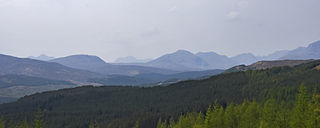
Established in 1889, the Scottish Mountaineering Club is a club for climbing and mountaineering in Scotland.
Mark Twight is an American climber, writer and the founder of Gym Jones. He rose to prominence as a mountaineer in the late 1980s and early 1990s with a series of difficult, dangerous alpine climbs in various ranges around the world. His radical, light-weight approach to alpinism has seen him regarded as an influential figure in the single-push movement.
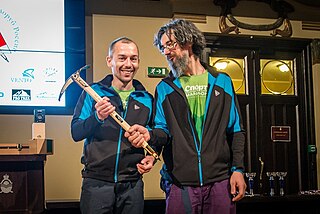
The Piolets d'Or is an annual mountaineering and alpine climbing award organized by the Groupe de Haute Montagne (GHM), and previously with co-founder Montagnes Magazine, since its founding in 1992. Golden ice axes are presented to the annual winners at a weekend awards festival based on their achievements in the previous year. It is considered mountaineering's highest honor and is referred to as the "Oscars of mountaineering".
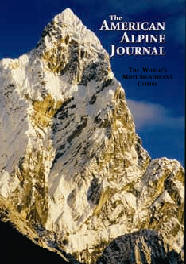
The American Alpine Journal is an annual magazine published by the American Alpine Club. Its mission is "to document and communicate mountain exploration." The headquarters is in Golden, Colorado.
Michael Fowler is a British rock climber, ice climber, mountaineer and climbing author. He is internationally noted for his alpine climbing and was awarded the Piolet d'Or three times, with Paul Ramsden, in 2003, 2013, and 2016, for alpine-style first ascents of faces in the Himalayas. Fowler was one of the first British rock climbers to free an E6-graded traditional rock climbing route, and the first ice climber to free a consensus grade VI mixed Scottish winter route.
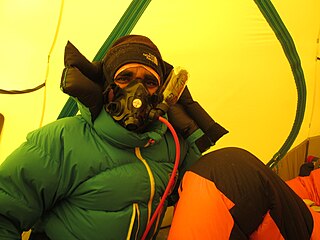
Expedition climbing, is a type of mountaineering that uses a series of well-stocked camps on the mountain that lead to the summit, and which are supplied by teams of mountain porters. In addition, expedition climbing can also employ multiple 'climbing teams' to work on the climbing route—not all of whom are expected to make the summit—and allows the use of supports such as fixed ropes, aluminum ladders, supplementary oxygen, and sherpa climbers. By its nature, expedition climbing often requires weeks to complete a given climbing route, and months of pre-planning given the greater scale of people and equipment that need to be coordinated for the climb.

Catherine Destivelle is a French rock climber and mountaineer who is considered one of the greatest and most important female climbers in the history of the sport. She came to prominence in the mid-1980s for sport climbing by winning the first major female climbing competitions, and by being the first female to redpoint a 7c+/8a sport climbing route with Fleur de Rocaille in 1985, and an 8a+ (5.13c) route with Choucas in 1988. During this period, she was considered the strongest female sport climber in the world along with Lynn Hill, however, in 1990 she retired to focus on alpine climbing.
William Lowell Putnam III was an alpinist, author and retired broadcasting executive. He was Trustee Emeritus of the Lowell Observatory, a private astronomical research facility. He was the son of politician and businessman Roger Putnam and a member of the prominent Lowell family of Massachusetts.
Alex MacIntyre (1954–1982) was a British mountaineer in the 1970s. He is known for developing new climbing techniques that enabled ascents not previously accomplished.

Alpine climbing is a type of mountaineering that involves using any of a broad range of advanced climbing skills, including rock climbing, ice climbing, and/or mixed climbing, to summit typically large routes in an alpine environment. While alpine climbing began in the European Alps, it is used to refer to climbing in any remote mountainous area, including in the Himalayas and in Patagonia. The derived term alpine style refers to the fashion of alpine climbing to be in small lightly-equipped teams who carry all of their own equipment, and do all of the climbing.
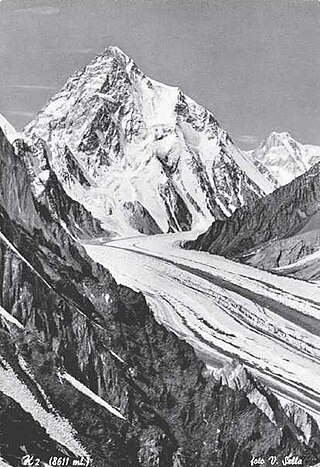
The 1939 American Karakoram expedition to K2 was the unsuccessful second attempt by American mountaineers to climb the then-unclimbed second-highest mountain in the world, K2, following the 1938 reconnaissance expedition. Fritz Wiessner, the leader of the expedition, and Pasang Dawa Lama got to within 800 feet (240 m) of the summit via the Abruzzi Ridge – a difficult and arduous route – with Wiessner doing practically all the lead climbing. Through a series of mishaps, one of the team members, Dudley Wolfe, was left stranded near the top of the mountain after his companions had descended to base camp. Three attempts were made to rescue Wolfe. On the second attempt three Sherpas reached him after he had been alone for a week at over 24,000 feet (7,300 m) but he refused to try to descend. Two days later the Sherpas again tried to rescue him, but they were never seen again. A final rescue effort was abandoned when all hope for the four climbers had been lost.
Hettie Dyhrenfurth (1892–1972) was a German-Swiss mountaineer. She took part in two major expeditions to the Himalayas in 1930 and 1934. Hettie and her husband Gunter Dyhrenfurth won the Olympic alpinism gold medal at the 1936 Berlin Olympics.

George Henry Lowe III is an American rock climber and alpinist, noted for his alpine style ascents of difficult and infrequently repeated routes, and his development of traditional climbing routes in the Western United States. He pioneered winter ascents in the North American Rockies along with cousins Jeff Lowe (climber), Mike Lowe, and Greg Lowe. He is also known for his technically difficult ascents of mixed climbing faces in the Himalayas including the North Ridge of Latok I and the first ascent of the East Face of Mount Everest, where the "Lowe Buttress" bears his name. Lowe is currently a resident of Colorado.

Ale Kunaver was a Slovenian alpinist and tour guide.














